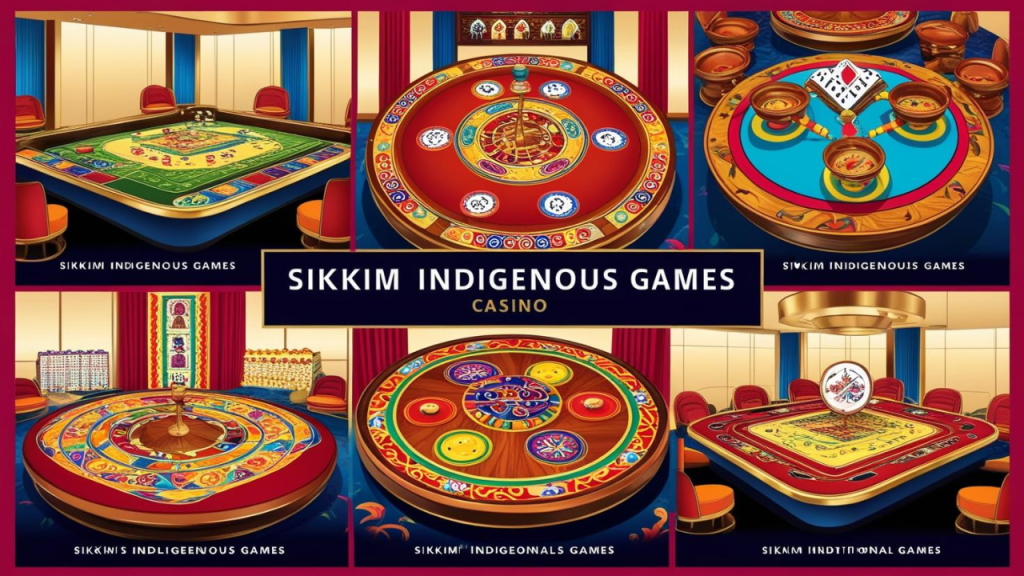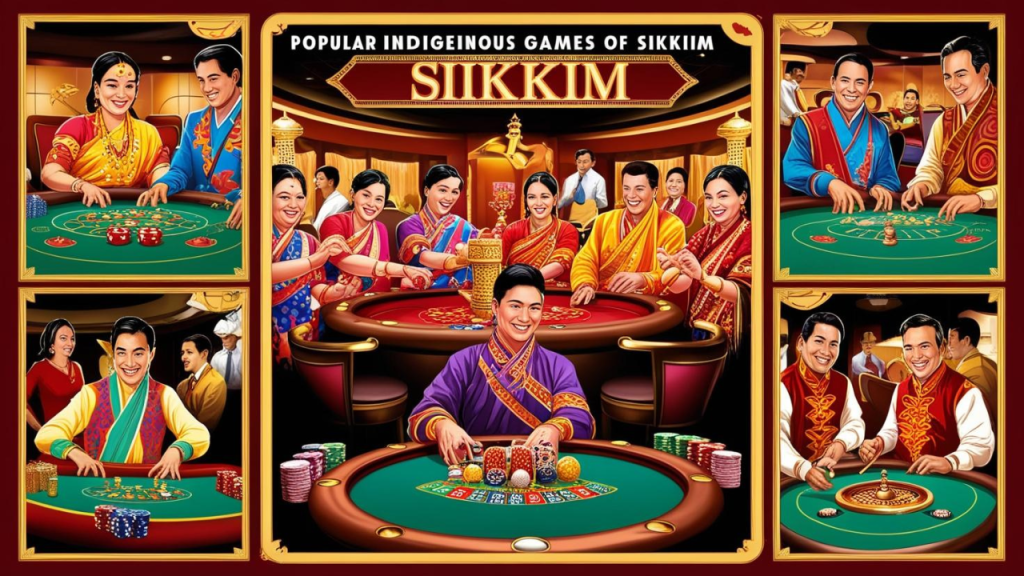Indigenous Games in Sikkim is covered in the embrace of the Himalayas and is known not only for its stunning landscapes and rich wildlife but also for its wonderful culture.

Indigenous Games in Sikkim Among the many things of the survivors, indigenous games hold a place of esteem.
These games, which are handed down from parents to children, are not only a source of entertainment, but they also have details about the cultural aspects, skills, and wisdom coming from the people of Sikkim.
In a modern age influenced by digital games, indigenous games in Sikkim are a connection to the history that promotes the local community and preserves the essence of the region’s rich cultural identity.
This article takes a closer look at the importance, variety, and continuing influence of these traditional games, revealing their role as the factors that support the social and cultural development of Sikkim.
The Significance of Indigenous Games in Sikkim
Indigenous games in Sikkim are deeply intertwined with the daily lives of its people. They offer more than just recreational value; they are a reflection of the region’s history, lifestyle, and indigenous knowledge. Some of the primary reasons these games remain relevant include:
Cultural Preservation – These games uphold the traditions and storytelling methods of the ancestors.
Community Bonding – Unlike modern video games, indigenous games promote face-to-face interactions, strengthening social relationships.
Skill Development – Many traditional games involve strategic thinking, agility, and physical endurance, helping in overall development.
Eco-Friendliness – Most games require minimal or no equipment, often utilizing natural elements like stones, sticks, or seeds.
Popular Indigenous Games of Sikkim
1. Pung-Sol (Traditional Archery)

Indigenous Games in Sikkim Archery holds a prestigious place in Sikkim’s history and culture. Pung-Sol, a traditional form of archery, is played during festivals and social gatherings. Participants aim at a distant target, testing their precision and focus. The game is often accompanied by traditional songs and celebrations, making it an integral part of Sikkimese identity.
2. Kho-Kho
Indigenous Games in Sikkim Though widely played across India, Kho-Kho has a distinct place in Sikkim’s rural communities. This tag-based game requires agility, teamwork, and quick decision-making. It is commonly played in open fields, encouraging physical fitness and camaraderie among players.
3. Dhukor (Knucklebones)
Dhukor, similar to the ancient game of knucklebones, involves tossing and catching small bones or stones in various patterns. It is particularly popular among children and helps in improving hand-eye coordination and concentration.
4. Bamboo Wrestling
A traditional test of strength, bamboo wrestling is a game where two players hold onto a bamboo stick and attempt to pull it away from each other. This game symbolizes endurance and skill, often played during local fairs and festivities.
5. Silly (Seed Tossing Game)
Silly is a strategic game where players use seeds or pebbles, aiming to land them in a designated area. It requires precision and careful calculation, making it both entertaining and mentally stimulating.
The Positive Impact of Indigenous Games in Sikkim
1. Reviving Cultural Identity
Indigenous Games in Sikkim act as cultural touchstones, ensuring that younger generations remain connected to their roots. They carry folklore, historical narratives, and social values that might otherwise fade away with modernization.

2. Promoting Physical Health
Many indigenous games demand physical exertion, contributing to overall fitness. Unlike sedentary digital gaming, these activities promote movement, coordination, and endurance.
3. Enhancing Social Skills
Face-to-face interactions in traditional games teach teamwork, patience, and communication. These skills are crucial in fostering strong communal bonds and leadership qualities.
4. Eco-Friendly and Cost-Effective
Most indigenous games utilize natural resources, making them sustainable and cost-effective. Unlike modern gaming consoles and expensive equipment, these games can be played with simple, locally available materials.
5. Educational and Cognitive Benefits
Strategy-based games like Dhukor and Silly encourage logical thinking and problem-solving skills. These mental exercises are essential for cognitive development, especially in children.
How to Preserve and Promote Indigenous Games in Sikkim
1. Inclusion in School Curricula
Schools can introduce indigenous games in their physical education programs to ensure that children learn and appreciate them from an early age.
2. Organizing Cultural Festivals and Competitions
Hosting indigenous game festivals can increase awareness and interest among locals and tourists alike. These events can also serve as platforms for knowledge exchange between generations.
3. Government and Community Support
Local authorities and cultural organizations should collaborate to document and promote these games through workshops, exhibitions, and digital storytelling.
4. Leveraging Social Media and Digital Platforms
While indigenous games are traditionally played in physical spaces, leveraging digital platforms can help in their documentation and wider promotion. Creating engaging content around these games on social media can spark interest among the youth.
5. Integration with Tourism
Sikkim’s tourism sector can incorporate indigenous games into experiential travel programs, allowing visitors to engage with the local culture authentically.
FAQs
1. Are indigenous games in Sikkim still played today?
Yes, there are still many indigenous games played in rural areas and during festivals. However, they are dying off gradually because of new technology and all their entertainment.
2. What is the significance of archery in Sikkimese culture?
Archery is not just a sport in Sikkim; it is a historical and cultural practice that is deeply connected to celebrations, ceremonies, and sometimes even religious beliefs.
3. How can younger generations be encouraged to play these games?
The introduction of these games through school curricula, organizing competitions and the use of digital media for awareness can be the best way to engage them.
4. What role does the government play in preserving these games?
The government can aid in conservation by offering financial support for cultural programs, tourism promotion, and including aboriginal games into educational and recreational activities.
5. Are there any annual events celebrating indigenous games in Sikkim?
Yes, the various culture festivals in Sikkim have some traditional games as part of their celebrations, but more structured events can further increase their popularity.
Conclusion
The games of the native people of Sikkim are much more than games; they are the evidence that the area has a long and glorious history, special customs, and also a strong sense of the community.
If modern ways of life are to continue changing, it has become an urgent requirement to conserve these historical jewels.
Only if the members of the society, communities, and governmental organizations are aware of it and continue to work together, such games will not die out but will be the support to the young generation.
Indigenous people games in Sikkim and traditions have been and will be the essential characteristics of the inexhaustible Sikkim’s heritage that will be inherited by the future generations. They are more than activities, they are the symbol of the past, present, and future of the mountain people.
At the same time, these games will help create a stronger cultural image for Sikkim and effectively walk the path of genuine, sustainable and rewarding living experience.

Deltin Royale Goa Casino Games: A Luxurious Gaming Experience in India